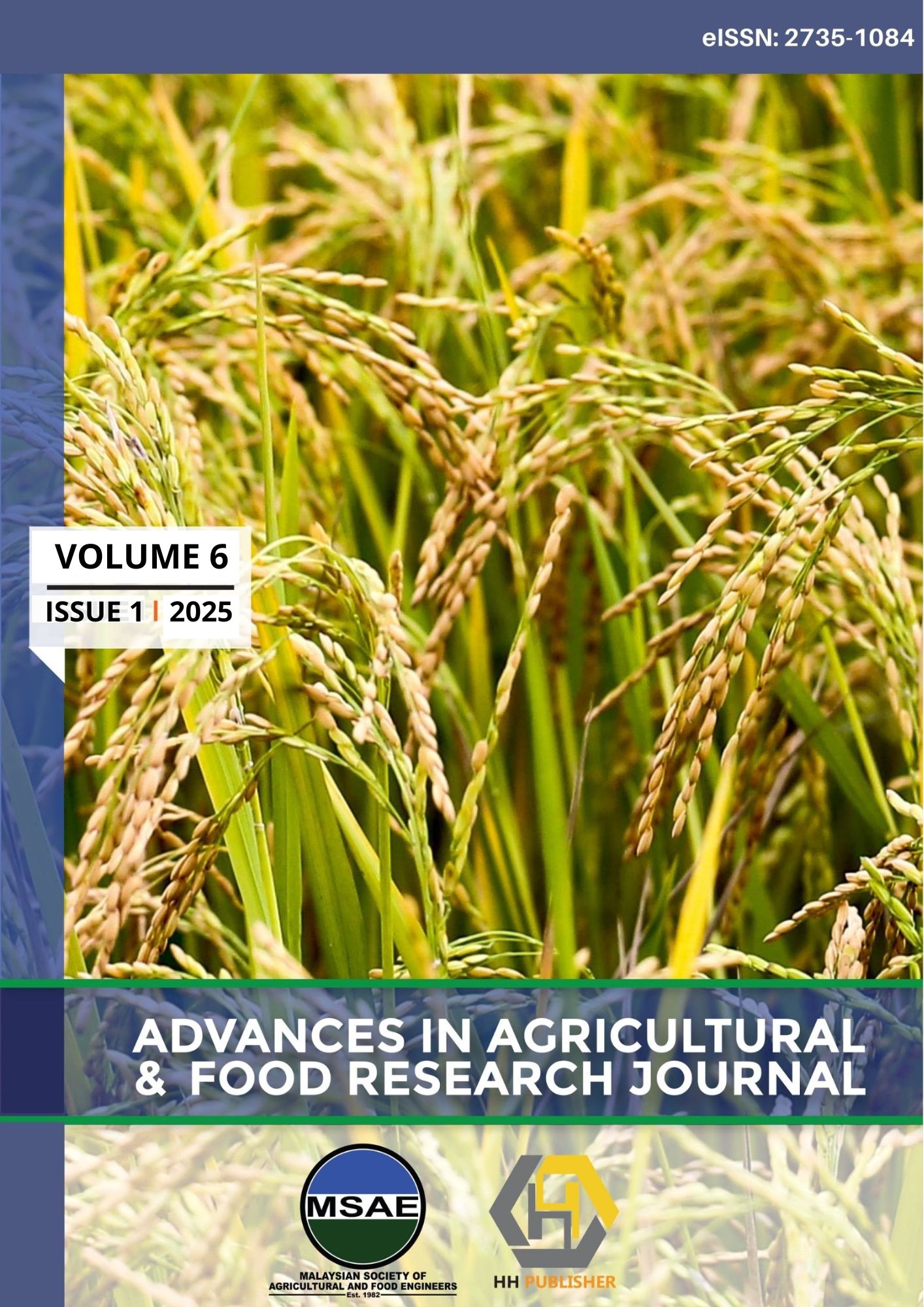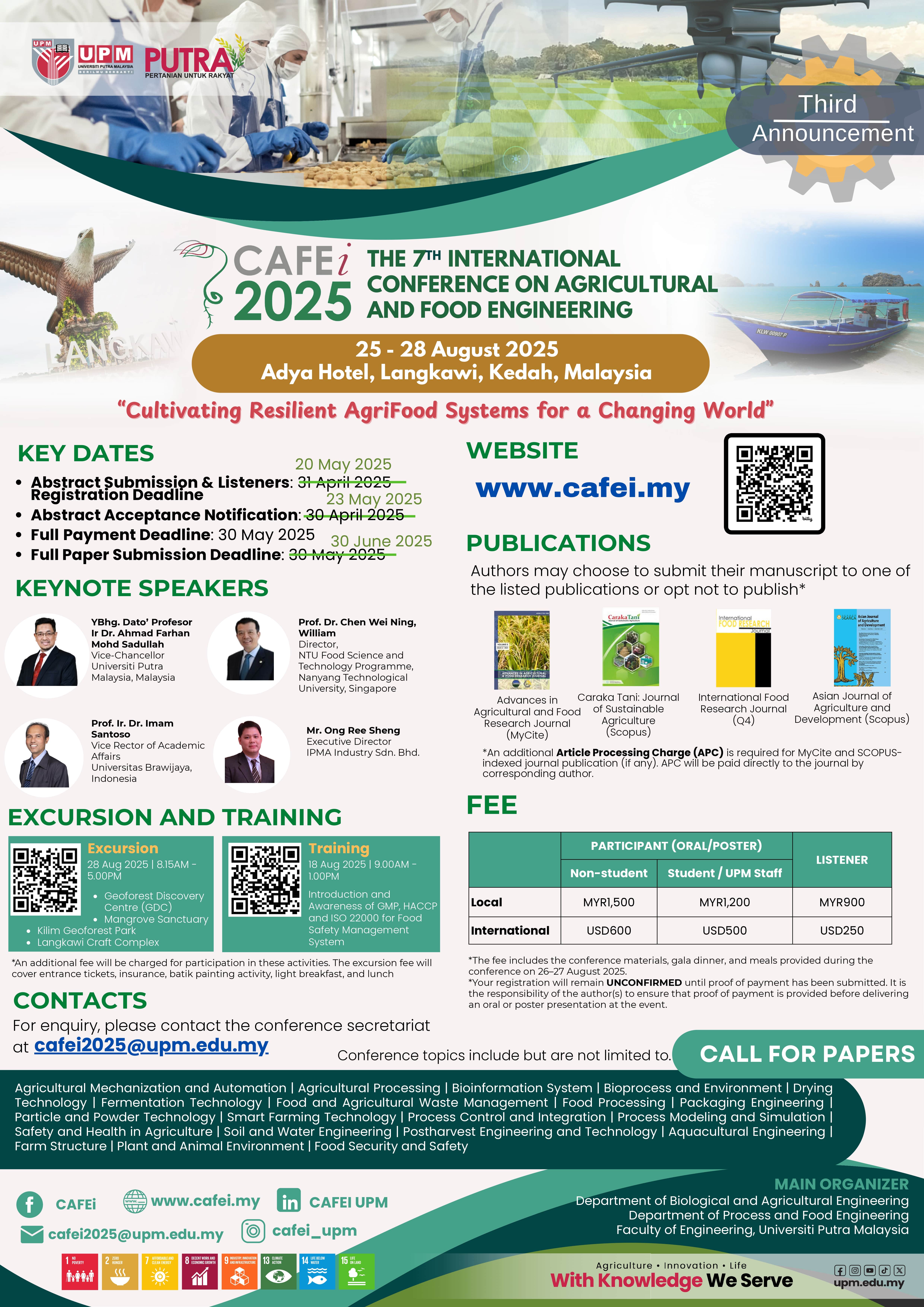Paddy Harvesting Based on Acreage or Paddy Harvesting Based on Weight: A Comparative Study on Combine Harvesting Loss
DOI:
https://doi.org/10.36877/aafrj.a0000380Abstract
Losses during paddy harvesting have been a common issue in Malaysia. Currently, there are two methods of harvesting charges, either based on acreage or based on weight. There is a need to observe the harvesting loss effects based on these harvesting charge methods. The experiment was conducted in MADA Regional Farmers’ Organization (PPK) E-IV, Kota Sarang Semut, Kedah, using only reconditioned tangential-flow type combines provided by MADA. The combines used recommended, optimized settings to ensure reduced harvesting losses. Harvesting losses were measured using both acreage-based and weight-based harvesting charges. Harvesting losses were also measured using three different types of harvesting speed: 3.6 km/h (low), 4.5 km/h (medium) and 6.1 km/h (high). Results showed that the average harvesting loss using the weight-based method was 1.3%, while the average harvesting loss using the acreage-based method was 4.6%. Regarding harvesting speed, a low speed resulted in an average harvesting loss of 1%, while a moderate speed resulted in an average harvesting loss of 2%. The top harvesting speed produced an average harvesting loss of 2.6%. Results showed that any harvesting charge method can be applied as long as combine harvesters are properly adjusted according to the recommended settings provided by MARDI SOP. Combine harvester operators should ensure their combine harvesters follow the recommended machine settings and harvesting speed to achieve lower harvesting losses.
Downloads
Published
How to Cite
Issue
Section
License
Copyright (c) 2025 Mohd Taufik Ahmad, Mohd Khusairy Khadzir, Ahmad Sukri Saad, Mohamad Ashraf Mohamad Puzi, Mohamad Fakhrul Zaman Omar, Wan Mohd Aznan Wan Ahamad, Mohamed Fauzi Md Isa, Anuar Abdullah, Mohd Shahril Shah Mohd Ghazali, Eddy Herman Sharu, Muhammad Haniff Ahmad, Mohamad Aufa Md Bookheri

This work is licensed under a Creative Commons Attribution-NonCommercial 4.0 International License.
Author(s) shall retain the copyright of their work and grant the Journal/Publisher right for the first publication with the work simultaneously licensed under:
Creative Commons Attribution-NonCommercial 4.0 International (CC BY-NC 4.0). This license allows for the copying, distribution and transmission of the work, provided the correct attribution of the original creator is stated. Adaptation and remixing are also permitted.

This broad license intends to facilitate free access to, as well as the unrestricted reuse of, original works of all types for non-commercial purposes.
The author(s) permits HH Publisher to publish this article that has not been submitted elsewhere.

.png)

.jpg)




